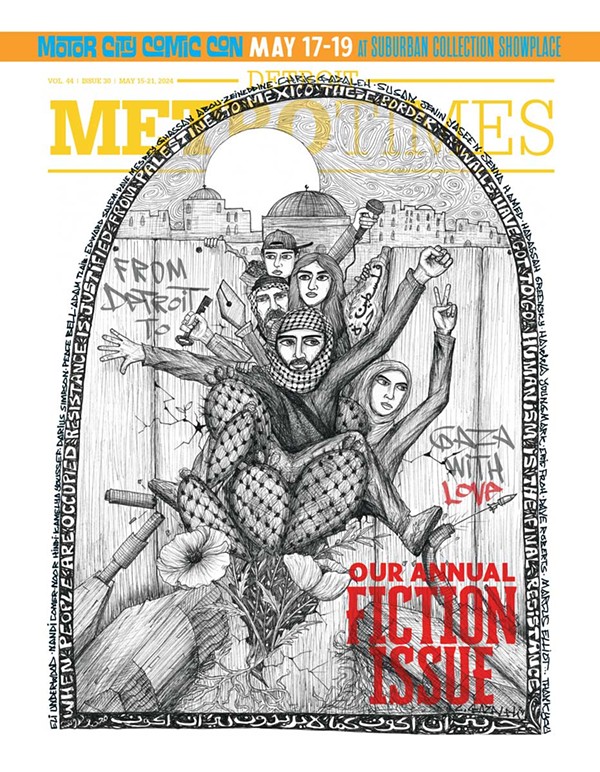"I think it’s a goner, " laments Hassan Hakmoun.
The world’s pre-eminent master of Gnawa trance music looks at the tattered and broken wooden case of his guitarlike instrument, the sintir.
"I guess they (the airline baggage handlers) didn’t pay attention to those ‘fragile’ stickers."
The Gnawa are a religious sect in Morocco, which traditionally performs trance-inducing music at healing ceremonies. I met Hakmoun on his way to his concert in Bloomington, Ind. "Somehow my instrument survived, but I’m going to need a new case before I fly out of here."
Unfortunately, the middle of Indiana is not a place to find ready-made sintir cases. As a matter of fact, Hakmoun made his sintir himself. Imagine an instrument the size of a guitar. The body is a carved-out tree log covered in camel skin, the neck a simple stick with one short and two long goat strings that produce a bass-like sound. "The sintir is the world’s first bass," explains the proud Moroccan.
"Before fish lines, before steel strings, in Africa, we had the sintir." And unless he was able to improvise a new case, Hakmoun wasn’t going to have a sintir much longer. After a fruitless trip to a music store, Hakmoun suggested, "Hey, what about this place?"
"Nevada Bob’s?" I responded.
"Yeah, they might have odd-sized golf cases that just might work."
As we walk toward the section of golf bags, a puzzled staff immediately gathers around the tall, dreadlocked Moroccan carrying his traditional North African instrument.
"Sir, may I help you? Are you looking for some golf clubs?" asks a concerned, conservatively dressed young salesman.
It’s rare enough to see an African-American customer in this suburban golf superstore. The reaction to the sintir-bearing Hakmoun is near shock as the staff of four immediately gathers around its most atypical new customer. "Sir, we have clubs over here, putters there and golf bags over there."
After finally explaining that we need something to protect the instrument, half of the staff returns to their sections of the store (though still staring), leaving us with just two salesmen following our every step, eager to show us new golf bags. Unfortunately, even the big plastic travel golf cases didn’t fit Hakmoun’s unusual instrument.
As we leave the strip-mall and head to do our interview, Hassan frets, "I guess we’ll have to hope that the universal repair kit will work ... duct tape."
Later that afternoon, as Hakmoun tries to put the Humpty Dumpty-esque wooden case back together again, he begins to retell his remarkable musical journey: "I witnessed my first Gnawa trance ceremony when I was just 6 years old," he explains.
"My little sister had been terribly burned. She was screaming. My mother, a Gnawa musician herself, immediately brought together the local Gnawa masters from their Moroccan neighborhood. They then sacrificed a goat, removed its skin and covered my sister with it," he relates.
"I was terrified, but I watched the entire time. They then began drumming, clapping and singing. A man playing the sintir joined in. Soon, my sister went into a trance, and, miraculously, she was healed."
That incident led the young Hakmoun to begin learning Gnawa music, first percussion and later the sintir. It is a tradition nearly six centuries old, with its roots stretching from sub-Saharan Africa all the way to Sudan before black Africans were brought as slaves (along with their music) to Marrakech (in what is now Morocco).
Hakmoun moved to New York City in 1986 to pursue his musical career. His music quickly caught the ear of Peter Gabriel who fell in love with his funky sintir playing, and led to Hakmoun’s crossover pop album, Trance on Gabriel’s RealWorld label.
"I actually have several bands," explains Hakmoun. "A traditional one, a crossover pop one called Zahar (with guitars, brass, etc.) and a jazz one. I see all of this as one music," he says.
"Whether I bring in some jazz, funk, rap or reggae, it is my way of bringing this Gnawa music to my audience."
By the end of our afternoon conversation, Hakmoun has miraculously improvised a part wood, part duct tape case.
"This just may make it back to New York," he says with a smile. Dan Rosenberg writes frequently about music for the Metro Times. E-mail [email protected]





